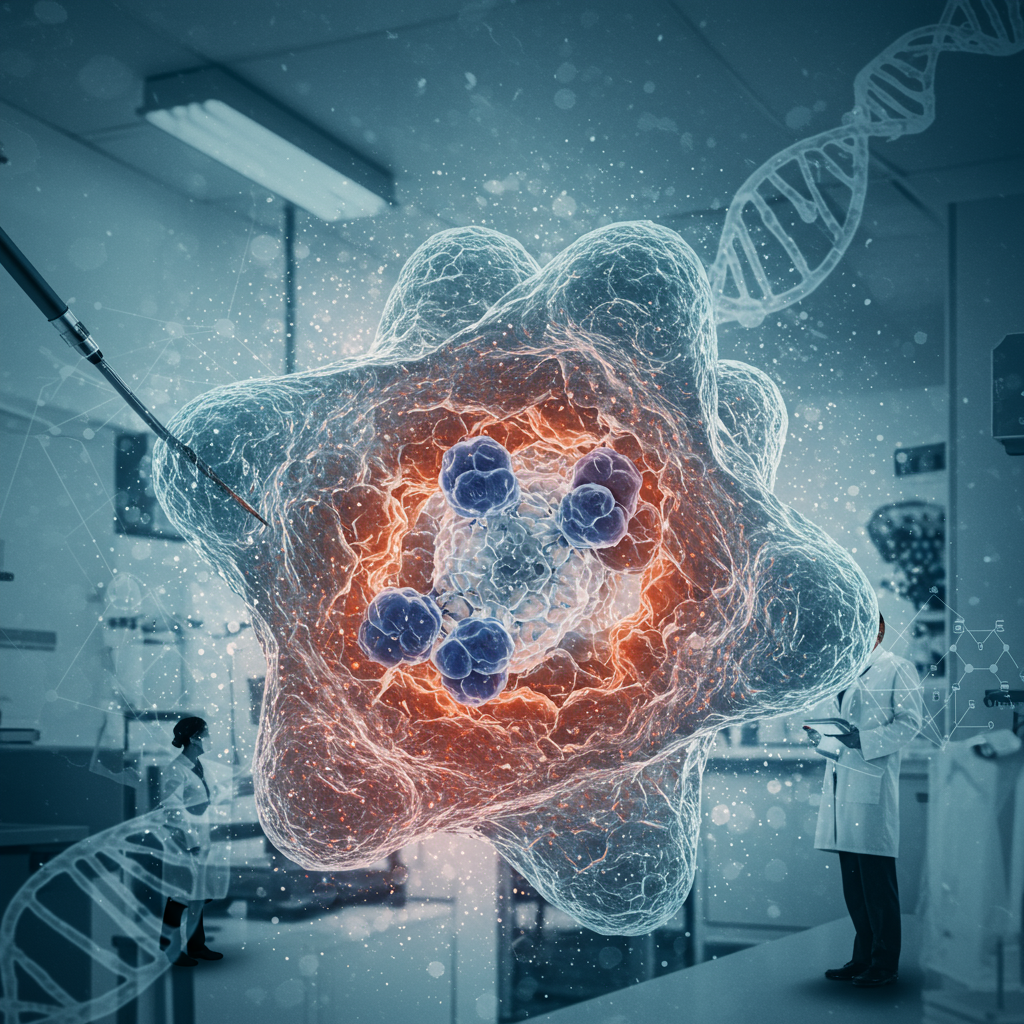Imagine navigating a vast, complex city. You know the major landmarks – City Hall, the main library, busy transportation hubs. But then, explorers uncover a previously hidden depot, quietly managing the flow of goods across the city. This new structure wasn’t on any map, yet it’s clearly vital to the city’s operations.
That’s the essence of a groundbreaking discovery recently made by scientists from the University of Virginia School of Medicine and the National Institutes of Health. Working at a microscopic scale inside human cells, they have identified a previously unknown structure, a specialized component called an organelle. They named this new organelle the hemifusome. Published in the journal Nature Communications, their research points to the hemifusome potentially holding critical clues for understanding some of the most devastating genetic disorders.
Uncovering a Hidden cellular Player
For decades, researchers have mapped the interior of our cells, identifying key organelles like mitochondria (the powerhouses) and the nucleus (containing our genetic code). Finding an entirely new, distinct organelle is a rare event in modern biology.
“This is like discovering a new recycling center inside the cell,” stated Dr. Seham Ebrahim, a researcher from UVA’s Department of Molecular Physiology and Biological Physics who co-authored the study. This vivid comparison highlights the hemifusome’s likely role in managing cellular materials. Cells are constantly processing, sorting, and transporting molecular “cargo” – everything from proteins and lipids to waste products.
At the heart of this internal transport system are vesicles. Think of vesicles as tiny bubbles or sacs that act like cellular delivery trucks. They are incredibly versatile, serving as mixing bowls for chemical reactions, storage units, or even waste disposal vehicles. This complex internal logistics network ensures the cell functions correctly.
According to Dr. Ebrahim, the newly found hemifusome appears to function like a vital checkpoint within this network. “The hemifusome ‘is like a loading dock,’ where the vesicles ‘connect and transfer cargo. It’s a step in the process we didn’t know existed.’” This suggests the organelle plays a previously unrecognized role in how cells package, sort, and move important molecules around.
Why This Matters for Genetic Disorders
The significance of uncovering this cellular loading dock is immense, particularly for genetic health. Many serious genetic conditions, including rare and devastating ones, stem from fundamental problems in how cells handle their internal cargo. When the intricate processes of molecular transport, packaging, or processing go awry due to genetic mutations, it can lead to widespread cellular dysfunction affecting multiple body systems.
Understanding genetic disorders is a massive challenge. The Human Genome Project revealed the sheer complexity of our genetic code and the vast number of genes (around 20,000-25,000) and their products. Beyond just the genes, the cell’s machinery that uses those genetic instructions is incredibly intricate. Diseases linked to organelles, like certain severe mitochondrial disorders caused by mutations in the POLG gene that disrupt mitochondrial DNA handling, demonstrate how malfunction in just one specialized structure can have catastrophic effects. These conditions are often difficult to treat precisely because the cellular processes are so complex and interconnected.
Discovering the hemifusome adds another crucial piece to this complex puzzle. If this new organelle is indeed a key nexus for managing cellular material, then defects in the hemifusome or processes it regulates could directly contribute to the cellular breakdowns seen in various genetic diseases.
The researchers are eager to explore precisely what happens when this newly discovered structure malfunctions. “We think the hemifusome helps manage how cells package and process material, and when this goes wrong, it may contribute to diseases that affect many systems in the body,” Dr. Ebrahim explained.
The Road Ahead: From Discovery to Treatment?
This groundbreaking discovery is just the initial step. The team’s immediate focus is on understanding the hemifusome’s precise role in healthy cells. What molecules does it interact with? How is its activity regulated? Where exactly does it fit into the known pathways of vesicle transport and cargo management?
Once scientists fully grasp the hemifusome’s normal function, they can then investigate what occurs when things deviate from that norm. This involves studying the organelle in the context of specific genetic mutations known to cause disease. Does the hemifusome fail to form correctly? Does it misdirect cargo? Does it become overloaded or blocked?
Answering these questions could potentially unlock new therapeutic strategies. If a genetic disorder is linked to a problem with the hemifusome, future treatments might target the organelle itself or the specific pathways it influences. This could involve developing drugs to correct the organelle’s function, reroute cellular traffic, or mitigate the consequences of faulty cargo handling. While the path from discovery to new treatments is long and complex, finding a previously unknown fundamental component of the cell opens entirely new avenues for research that didn’t exist before.
Visualizing structures this small requires sophisticated techniques. The researchers utilized advanced imaging methods, including Cryo-electron tomography, to obtain detailed views of these hemifusomes within the cellular environment, providing crucial visual evidence of their existence and structure.
As Dr. Ebrahim aptly puts it, “This is just the beginning… Now that we know hemifusomes exist, we can start asking how they behave in healthy cells and what happens when things go wrong. That could lead us to new strategies for treating complex genetic diseases.” The discovery of this new cell structure is an exciting reminder of how much more there is to learn about the basic building blocks of life and how these fundamental insights can pave the way for future medical breakthroughs. Finding something truly new inside a cell is rare and represents a significant stride forward in our understanding of cell health and the origins of disease.
Frequently Asked Questions
What is the newly discovered cell structure called?
The recently discovered cellular organelle is named the hemifusome. This specialized structure was identified by researchers at the University of Virginia and the National Institutes of Health inside human cells. Its discovery is considered significant because finding a new type of organelle is uncommon in modern cell biology.
How might the hemifusome discovery help treat genetic disorders?
Researchers believe the hemifusome plays a role in how cells manage and transport internal materials, similar to a loading dock for vesicles carrying molecular cargo. Many genetic disorders are caused by errors in these fundamental cellular processes. By understanding the hemifusome’s normal function and what happens when it malfunctions, scientists may identify specific defects linked to certain genetic diseases. This could lead to developing targeted therapies that correct the organelle’s activity or the processes it controls.
What role do vesicles play in cellular transport?
Vesicles are small, bubble-like sacs within cells that act as crucial carriers for transporting various molecules, or “cargo.” They are essential for many cellular functions, including moving substances within the cell, transporting materials to the cell membrane for secretion, or delivering waste to recycling centers. The newly discovered hemifusome appears to interact with vesicles, suggesting it plays a key role in directing or processing this cellular cargo transport.




